Honda Ridgeline Vs Toyota Tacoma: Which Midsize Pickup is Right For You?
After the American brands all but pulled out of the midsize truck segment, the Toyota Tacoma dominated the class thanks to little competition.
The biggest competitor to the Tacoma was and continues to be the Nissan Frontier, but Ford, Chevrolet, GMC, and Jeep have all jumped back into the segment with traditional trucks as it has grown exponentially over the last decade.
On the other hand, Honda took a different approach to the pickup world, with the Ridgeline offering more of an SUV feel by coupling a unibody construction with the cargo bed of a midsize truck. As a result, the Ridgeline is unlike any of the other midsize pickups, but that is what has made it so attractive to owners. It offers a more car-like feel and more enclosed storage than any other midsize truck while still featuring bed space and room for five passengers.
Get a Quote on a New Honda Ridgeline or Toyota TacomaIf you are shopping for a midsize pickup, you can pick the old school leader or the new kid on the block. The Toyota Tacoma is the segment leader, thriving for decades as a traditional body-on-frame pickup while the Honda Ridgeline has a very different feel inside and out. To help decide which of these two midsize trucks is right for you, we have broken down all of the key categories for new vehicle shopping below, offering a look at which pickup shines brighter in which areas.
Cabin Space
These two trucks are both in the midsize segment, but because of the difference in chassis construction and body shape, the interior dimensions are very different. The SUV-based model has the advantage in interior space for passengers.
Tacoma: In terms of the front seats, the Tacoma offers 39.7 inches (1,008 mm) of headroom, 42.9 inches (1,090 mm) of legroom, 58.3 inches (1,481 mm) of shoulder room, and 57.2 inches (1,453 mm) of hip room. In the second row, the Tacoma features 38.3 inches (973 mm) of headroom, 32.6 inches (828 mm) of legroom, 58.9 inches (1,496 mm) of shoulder room, and 56.3 inches (1,430 mm) of hip room.
Ridgeline: The Honda Ridgeline offers slightly different headroom measurements depending on whether the truck has the power moonroof or not. Non-moonroof models offer 40.1 inches (1,018 mm) of headroom while the moonroof models offer 39.5 inches (1,003 mm) in the front row. The Ridgeline also offers 40.9 inches (1,039 mm) of legroom, 62 inches (1,575 mm) of shoulder room, and 59.1 inches (1,501 mm) of hip room up front with 38.8 inches of headroom, 36.7 inches (932 mm) of legroom, 61.5 inches (1,562 mm) of shoulder room, and 56.6 inches (1,438 mm) of hip room in the rear.
Bottom Line: The Tacoma and Ridgeline have similar headroom, but the Ridgeline has the advantage front and rear. The Tacoma offers more front legroom, but the Honda offers more rear legroom, more shoulder room, and more hip space in both rows. If passenger space is your key concern, the Ridgeline has a definite advantage over the Tacoma.
Cargo and Towing
Body-on-frame vehicles like the Toyota Tacoma are typically tougher and more capable than unibody models like the Honda Ridgeline. When comparing the V6-powered Tacoma to the V6-only Ridgeline, the Toyota has the advantage in towing capacity while select Tacomas also have an advantage in payload capacity.
Tacoma: The payload capacity of the Toyota Tacoma varies based on engine, drivetrain configuration, cab size, and bed size. The loaded 4×4 V6 Double Cab Limited model with the five-foot bed has a payload capacity of just 1,095 lb while the Tacoma SR with the 4-cylinder engine, rear-drive, and six-foot bed has a hauling capacity of 1,685 lb. Every other model in Toyota’s extensive lineup falls within that range, with most being at or over 1,300 lb.
In terms of towing, the 4-cylinder Tacoma will pull up to 3,500 lb while the V6-powered midsize Toyota pickup will tow up to 6,800 lb.
Ridgeline: Since the Honda Ridgeline only comes with one engine, one transmission, one drivetrain configuration, and one body size, every model has a payload capacity in the range of 1,509 to 1,583 lb. The premium models with more interior features weigh more, so they have a lower payload capacity, but the change is minimal from one model to the next.
Ridgeline stands out from every other midsize truck as it’s the only one to offer an in-bed trunk. When you open the tailgate, the rear-most portion of the bed floor lifts up to expose a 7-cubic foot trunk, adding unique enclosed storage that doesn’t take up interior space.
Bottom Line: When properly configured, the Tacoma will haul more weight in the bed than the Ridgeline, but the loaded Honda will carry more weight than the loaded Toyota. On the other hand, the V6-powered Tacoma will pull a heavier trailer than the standard Ridgeline. If towing is your key concern, the Tacoma is the easy choice. If payload capacity is your key concern, certain Toyota models have an advantage while also offering stronger towing numbers in V6 form. The key advantage for the Ridgeline is the trunk, adding more secure cargo space to the interior.
Technology and Features
Back in the day, the mid-sized pickups were designed to get people into trucks for the smallest price possible, so they were relatively short on features, let alone items once reserved for luxury models. Thankfully, the midsize pickup segment has grown with the rest of the industry, so both the Tacoma and the Ridgeline come with a long list of standard and optional interior features. This includes a premium touchscreen infotainment system on every model and heated, leather seating surfaces on most models.
Tacoma: The Tacoma SR comes with cloth seats with the front seats offering four-way manual adjustment while the SR5 models have the same cloth seats with a 10-way power adjustment for the driver’s seat. The SR5 models also add a leather-trimmed steering wheel with Bluetooth hands-free access controls. The TRD Sport and TRD Off-Road models come with the same cloth seats with a 10-way power driver’s side adjust, but you can also opt for leather seats in these two Toyota Racing Development models. Finally, the Tacoma Limited and TRD Pro come standard with leather-trimmed, heated seats with 10-way driver’s power adjustment and 4-way manual passenger’s front adjustment.
The Toyota Tacoma is offered with two different infotainment systems. The SR comes with a 7-inch touchscreen, but the SR5, TRD, and Limited models all come with an 8-inch touchscreen and all models come with Android Auto, Apple CarPlay and Amazon Alexa compatibility, Bluetooth connectivity, and SiriusXM. The Tacoma SR models come with a basic four-speaker system while the SR5, TRD Sport and TRD Off-Road come with a six-speaker system. Tacoma Limited and TRD Pro models come with the 8-inch touchscreen and a JBL 6-speaker system.
Every new Toyota Tacoma comes standard with an analog gauge cluster with a 4.2-inch LED information screen in the center, front dual-zone climate control, remote keyless entry, and a tilt/telescopic steering wheel with audio controls.
Ridgeline: The Honda Ridgeline Sport comes with cloth seats with 4-way manual adjustment and a 60/40 split rear bench seat and standard seating capacity for five. The RTL, RTL-E, and Black Edition all come with leather seats, featuring heated front seats with 10-way power adjustment for the driver’s seat and 4-way power adjustment for the front passenger seat. The rear bench of these models offer the same 60/40 split, but it is wrapped in leather. The Ridgeline models that come with leather seats also come with a leather-wrapped steering wheel that is heated in RTL-E and Black Edition models.
All Ridgeline models come standard with the same infotainment system, built around an 8-inch touchscreen. This system includes Bluetooth, Apple CarPlay and Android Auto compatibility, USB input access, and HondaLink on all models. SiriusXM is included with RTL, RTL-E, and Black Edition models while the RTL-E and Black Edition trucks also have HD Radio, the audio system in the bed, navigation, an auto-dimming rearview mirror, the power moonroof, and a wireless phone charger. The Ridgeline Sport and RTL come with a 7-speaker system while the RTL-E and Black Edition come with 8 speakers.
All new Ridgelines come with a 4.2-inch driver information screen in the gauge cluster, 3-zone automatic climate control, cruise control, a tilt-and-telescoping steering wheel with audio controls, power windows, power door locks, and push-button start.
Bottom Line: When both of these trucks are all loaded up in their premium trim levels, the amenities and practically identical, but the Ridgeline has more standard features across the whole lineup. If you want the most interior gadgets for the lowest price, the Ridgeline has the advantage in the lower-priced trim levels, but Honda’s “cheaper” models still cost more than the base Tacoma. In other words, the Ridgeline gives you more, but you are paying more.
Powertrain
The Toyota Tacoma is offered with two different engines and two different drivetrain configurations, while the Honda Ridgeline comes with one standard engine, transmission, and drivetrain layout. The premium engine in the Tacoma and the standard engine in the Ridgeline are both 3.5-liter V6 mills, so they compare very nicely head-to-head.
Tacoma: The Toyota Tacoma is available with two different engines, two different transmissions, and either rear- or four-wheel-drive. In the SR and SR5 trims, the 2.7-liter 4-cylinder with 159 horsepower and 180 lb-ft of torque is standard, as is a 6-speed automatic transmission. This engine can be ordered with rear- or four-wheel-drive. The optional engine for the SR and SR5 is a 3.5-liter V6 with 278 horsepower and 265 lb-ft of torque, which is also mated to a standard 6-speed automatic transmission and either rear- or four-wheel-drive.
SEE ALSO: 2020 Toyota Tacoma TRD Pro ReviewFor the Tacoma TRD Sport and TRD Off-Road, the 3.5-liter V6 with the 6-speed automatic is standard, but you can still pick between rear-wheel-drive and four-wheel-drive. If you get either of these models with four-wheel-drive, you can also opt for the six-speed manual transmission. For the Tacoma TRD Pro, you can also choose between the automatic or manual transmission with the V6, but four-wheel-drive is standard with that model. The loaded Tacoma Limited also comes with the 278-horsepower V6 and the six-speed automatic transmission as standard equipment, with your choice of rear- or four-wheel-drive.
Ridgeline: Every new Honda Ridgeline comes with the same drivetrain, starting with a 3.5-liter V6 that delivers 280 horsepower and 262 lb-ft of torque. That engine is mated to a standard 9-speed automatic transmission and the standard Intelligent Variable Torque Management AWD System. In the past, the Ridgeline was available with front-wheel-drive as well, but all-wheel-drive is now standard.
Bottom Line: If you want a 4-cylinder engine or two-wheel-drive, the Toyota Tacoma is obviously the better choice of these two as the Ridgeline only comes in V6 AWD form. If you are looking for V6 power, it is a tough battle. The Honda has a little more horsepower and the Toyota has a little more torque. When you compared the two trucks across the trims, the Tacoma weighs a bit less, so it will make better use of the power, so it will feel a bit quicker.
Fuel Economy
In the grand scheme of things, the fuel economy numbers of the Toyota Tacoma and Honda Ridgeline are fairly mediocre. They aren’t bad and they aren’t great, but for roomy pickups with an open cargo bed, these numbers are fairly normal for the midsized segment.
Tacoma: The fuel economy ratings for the Toyota Tacoma vary based on engine, transmission, and drive configuration. The rear-drive Tacoma with the 4-cylinder offers 20 mpg around town and 23 on the highway while the rear-drive V6 trucks are rated at 19 around town and 24 on the highway. Adding four-wheel-drive to the 4-cylinder trucks only drops the ratings to 19 city and 22 highway while the four-wheel-drive V6 models get 18 city and 22 highway. The rugged off-road models with the manual transmission offer 17 around town and 21 on the open road.
The Tacoma has a 21.1-gallon fuel tank.
Ridgeline: The Honda Ridgeline with the standard V6, automatic transmission, and all-wheel-drive system is rated at 18 miles per gallon around town and 24 mpg on the highway. The Ridgeline has a 19.5-gallon fuel tank.
Bottom Line: When you compare the Tacoma with the V6 and four-wheel-drive to the standard Ridgeline, the two offer the same city fuel economy numbers, but the Honda is 10% better on the highway thanks to the 9-speed automatic transmission. If you want all-wheel-drive and the best MPGs, the Ridgeline is the winner while the V6 Tacoma with rear-drive offers the same 24 on the highway and 19 around town, making that the winner for those who can live with a two-wheel-drive truck.
Safety
Honda and Toyota are both industry leaders when it comes to safety features and a reputation for overall safe vehicles, so it should come as little surprise that the Tacoma and Ridgeline are packed with high-tech gadgets that make both trucks safer for everyone on the road. No longer does driving a small truck mean that you have to compromise on technology or safety, with these two pickups including many of the most popular safety tech devices of the modern industry.
Tacoma: Standard features of the Tacoma begin with the Star Safety System, which includes Vehicle Stability Control, Traction Control, Anti-lock Brake System with Electronic Brake-force Distribution, Brake Assist, and Smart Stop Technology. Next, the Toyota Safety Sense system includes Pre-Collision System with Pedestrian Detection, Lane Departure Alert, Automatic High Beams, and Dynamic Radar Cruise Control. The Tacoma also comes standard with the driver and front passenger Advanced Airbag System, driver and front passenger seat-mounted side airbags, driver and front passenger knee airbags and front and rear Roll-sensing Side Curtain Airbags, Driver and front passenger active headrests, child-protector rear door locks, the Tire Pressure Monitor System, an engine immobilizer and ToyotaCare with Roadside Assistance.
Optional safety features in the Tacoma include the Blind Spot Monitor with Rear Cross-Traffic Alert system and a sonar-based rear parking assist system.
Ridgeline: Standard safety features of the Honda Ridgeline begin with an array of active on-road gadgets, including Collision Mitigation Braking, Road Departure Mitigation, Adaptive Cruise Control, Lane Keep Assist, Forward Collision Warning, and Lane Departure Warning. There is also a standard Multi-Angle Rearview Camera system along with industry standards such as stability control, traction control, antilock brakes, electronic brake distribution, brake assist, and a tire pressure monitoring system. In terms of airbags, every Ridgeline comes with advanced front airbags, SmartVent front side airbags, and side curtain airbags with a rollover sensor.
SEE ALSO: Toyota Tacoma vs Toyota 4Runner: Which Mid-Sizer is Right for You?Optional safety features of the Honda Ridgeline include Blind Spot Monitoring, available with RTL, RTL-E, and Black Edition models, while RTL-E and Black Edition models come with automatic high beam headlights.
Bottom Line: Both of these trucks have a long list of standard safety features, but the Toyota Tacoma has the advantage with more airbags and more safety systems.
Styling
With the Tacoma being a body-on-frame truck that is designed with off-roading in mind while the Ridgeline is a low-riding unibody truck, the two have very different exterior styling. The Toyota has the traditional truck look that you would expect while the Honda looks more like an SUV with a bed.
Tacoma: While the overall stance of the Toyota Tacoma varies by trim level and drivetrain configuration, the model generally has a higher-riding feel that you expect from a body-on-frame, off-road-ready truck. It has large LED-trimmed headlights that angle towards the grille, which takes up most of the front end. There is a slim lower grille open which extends out to the corners of the vehicle, holding the fog lights as well. Along the sides, the Tacoma has flared wheel openings that angle upwards at the rear, with that upward angle being reflected through the side windows. Out back, the Tacoma has clear-lens LED taillights.
Ridgeline: The Ridgeline front end looks a great deal like the closely-related Pilot, but considering that the two Honda vehicles are based on the same chassis, it makes sense that the two look similar. Overall, the Ridgeline has a very SUV-like shape and stance, with the exception of the cargo bed out back. It has angular, LED-lined headlights flanking the large upper grille with a smaller grille opening and fog lights in the lower fascia. The Ridgeline has smaller side windows, but the sharp body lines give the Honda a very sporty feel, accentuated by the low ride height.
Bottom Line: If you like the traditional pickup look and stance, the Tacoma is the easy pick out of these two. If you like the low-slung SUV shape of the Ridgeline, the Honda is likely to appeal more to you.
Pricing
The Tacoma and Ridgeline have very different pricing scales due to the fact that the Toyota has a 4-cylinder engine, rear-drive and different body configurations. Since the Ridgeline only comes with the V6 and all-wheel-drive, it has a much higher starting price point, but when you compare the V6 four-wheel-drive Tacoma, there isn’t a huge difference. However, the Toyota still has the advantage in most forms.
Tacoma: The Tacoma in the SR trim level starts at $28,175 for the rear-drive 4-cylinder models and $33,610 for V6 power. The Tacoma SR5 Double Cab starts at $30,025 with the 4-cylinder and rear-drive, $33,425 for the V6 and rear-drive, and $36,500 for the V6 and four-wheel-drive – which would be the first comparative model for the Ridgeline. The Tacoma TRD Off-Road V6 and four-wheel-drive starts at $38,475, Tacoma Limited with the V6, auto and four-wheel-drive starts at $43,175, making the picture a few thousand dollars cheaper than the SUV when comparing similarly-configured vehicles.
Ridgeline: The Honda Ridgeline starts at $37,665 for the Sport trim level, which includes the $1,175 destination fee. The RTL model starts at $40,645, the RTL-E starts at $43,595 and the Black Edition starts at $45,095.
Bottom Line: If you are looking to get into a truck for the lowest price possible, the 4-cylinder Tacoma has a big advantage over the Ridgeline. Even if you compare V6 four-wheel-drive models, the Toyota has a pricing advantage at the base level and at the premium luxury level.
Verdict
If you want a mid-sized truck that offers the best culmination of power, payload capacity, hauling capacity, safety technology, and off-road abilities with a smaller price, the Toyota Tacoma is the easy pick out of these two trucks. Basically, if you are going to drive off-road, on rough roads or you plan to do any real work with the truck, the Tacoma is the better option. If you want a truck that offers more interior space, better interior tech, more secure cargo space outside of the cabin, and a more SUV-like feel on the road, the Ridgeline is the better choice. Really, if you are only going to drive the truck on the road and you don’t plan to tow or haul much weight, the biggest difference between these two trucks is the driving dynamics and for our tastes, we prefer the body-on-frame feel of the Tacoma.
Become an AutoGuide insider. Get the latest from the automotive world first by subscribing to our newsletter here.
Patrick Rall has been covering the automotive industry for over a decade, but was born into car culture. Having grown up in his father's performance shop, he spent extensive time at the track, driving and wrenching on various types of vehicles.
More by Patrick Rall



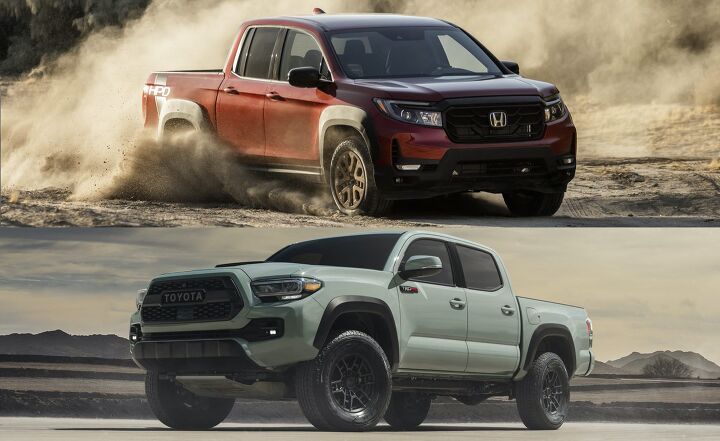
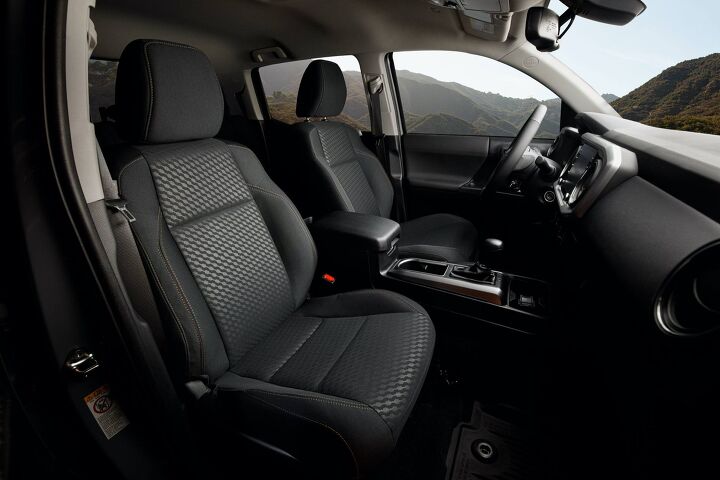
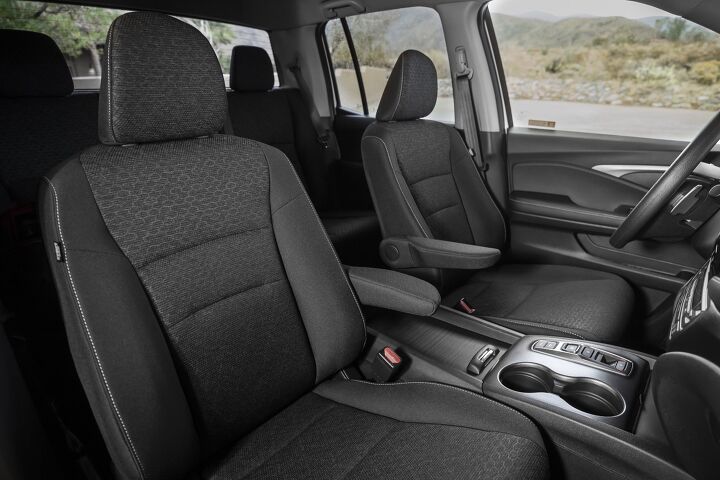


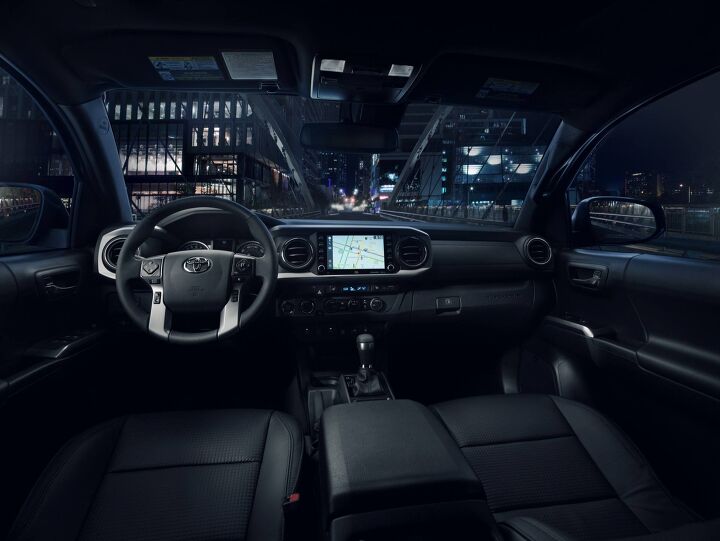



























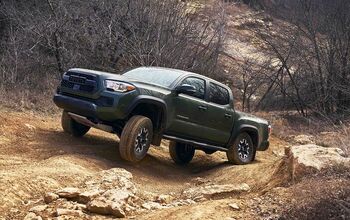
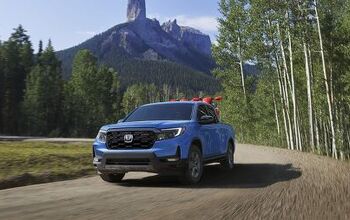
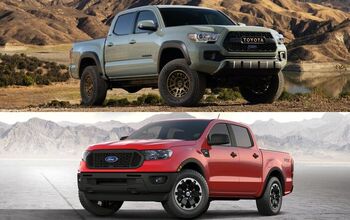

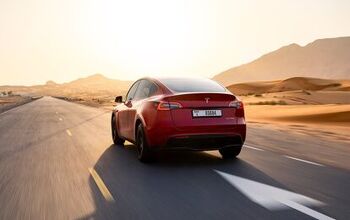



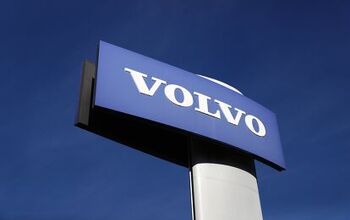
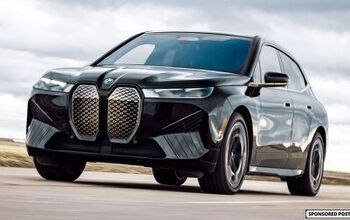

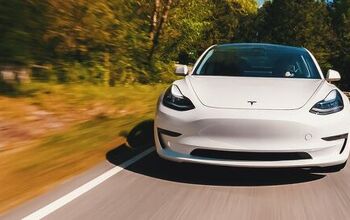
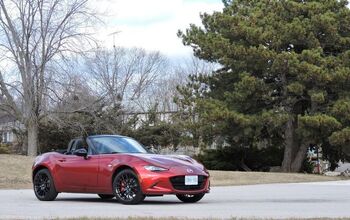


Comments
Join the conversation